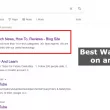All of us need to know How to Check if a Website is Legit or Scam? Every day we visit one or another website for various needs. Many times I see a particular website by clicking on a link on Facebook.
Sometimes we visit any known or unknown website, even with the link in the e-mail.
But it is essential to know if the website I am visiting is a scam. Otherwise, there is an excellent possibility of losing a lot by falling into the hands of scammers. Although there are 12 brilliant tips to protect your smartphone from scammers, it is essential to know in advance whether the website I am on is a scam.
Because the Internet is full of many kinds of websites. And some of these websites are fake, some are full of scams, and many websites are full of various scams.
Just as the Internet has made life easier and more enjoyable, so to have the myriad of entangled websites playing catch-up with our lives. Through scamming, all these websites collect our personal information and often throw us into the trap. Therefore, it is essential to know How to Check if a Website is Legit or Scam.
How to Check if a Website is Legit or Scam?

1. See Address Bar or URL
The first step in understanding whether a website is a scam is to check the address bar or URL. You have to look at the URL or address bar of the website you are visiting. If the URL of the website has HTTPS: // at the beginning, which means Hypertext Transfer Protocol Secure, then you can assume that this website is not a scam.
S in the URL or address bar of the website means Secure, which uses encryption in data transfer. In other words, the data that you see when you visit the website comes to you as a secure server that protects you from hackers or scammers. For example, the website you are reading this article on, i.e., see the URL of the Techno Hungry tech blog site, has https://technohungry.com/ at the beginning.
Suppose you see that the address of a website does not have HTTPS:// at the beginning, only HTTP: //. In that case, you can naturally assume that this website is not using a secured server. So, it could be a scam website. And it is better to refrain from visiting such websites.
2. Check the Domain Name
One of the favorite and powerful techniques of scammers is that they take the domain of a scamming website to match the part of a famous company. E.g.
- yah00.com
- amaz0n.net
- Daraj.com
Instead of double and (oo) of yah00.com, double zero (00) quickly indicates scamming. Similarly, in amaz0n.net and its place is zero. Again, j appears in place of z on Daraj.com.
Whenever you see something like this on a friendly website, you will quickly understand that it is a scam site. If necessary, double-check the domain name. And go away by overtaking this kind of website.
3. Check the Age of the Domain
Domain age checking is one of the most effective ways to identify scamming websites. Scammers know that people usually shop the most on off days. So, all they have to do is set up a website as soon as they realize the holiday season. In most cases, they buy the domain within a day, run the website, and shut down again as soon as the scam is over.
The age of the domain needs to be checked to see if the website you are browsing is similar. This will let you know when you have been doing business, meaning the age of the domain will give you a better idea of the business.
Using Whois Lookup, you can quickly know the age of any website. Just go to the link and paste the URL of the website and click on the search button.
4. Poor Grammar and Misspellings
With more spelling, punctuation, color capitalization, and grammar mistakes, it’s easy to see that the website was created in a hurry. You will never see this kind of mistake on a professional website.
If you see many capital letters on your browsing website, i.e., the note at the beginning of the word is capitalized, make sure it is a scam site.
5. Try Contacting
All websites have contact information. For example, office address, phone number, e-mail and live chat. It is no longer possible to go to the office address and check. So, give it a try. If someone doesn’t hold the phone or talks about the scamming type of phone, you can understand what kind of site it is.
Sometimes you will find many websites whose contact information is all the same. Again, some websites have the same default message for live chat.
6. Read Comments and Reviews, see Feedback
The content of any good-quality website has a comment option at the bottom, and you will see many comments there. Read the comments and see who wrote what. Again, it is often the case that scammers sing their own praises and make good comments.
How do you know if the comments or reviews are real or fake? Hmm, there’s a way; Make a comment yourself. If you see that your statement or study has been published and replayed, then understand that this is an accurate site, not a scam.
7. Try a Virus Scan
Most scamming websites have more ads than content. And most of the ads are in pop-up style. Whether you enter this type of website or not, you will see one pop-up ad after another coming. Usually, websites with additional and pop-up ads are scammed.
You can run a virus scan to see if the website is a scam. There are plenty of virus scanning tools available online that can be used for free. Here are links to some of these tools that you can use to scan your website.
Also Read: How Does a Virus Infect Your Computer?
Hopefully, using the above 7 Way: How to Check if a Website is Legit or Scam, you can quickly determine if the website you are visiting is a scam. If you still need any more help, let us know.


